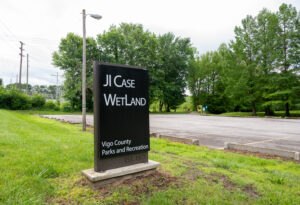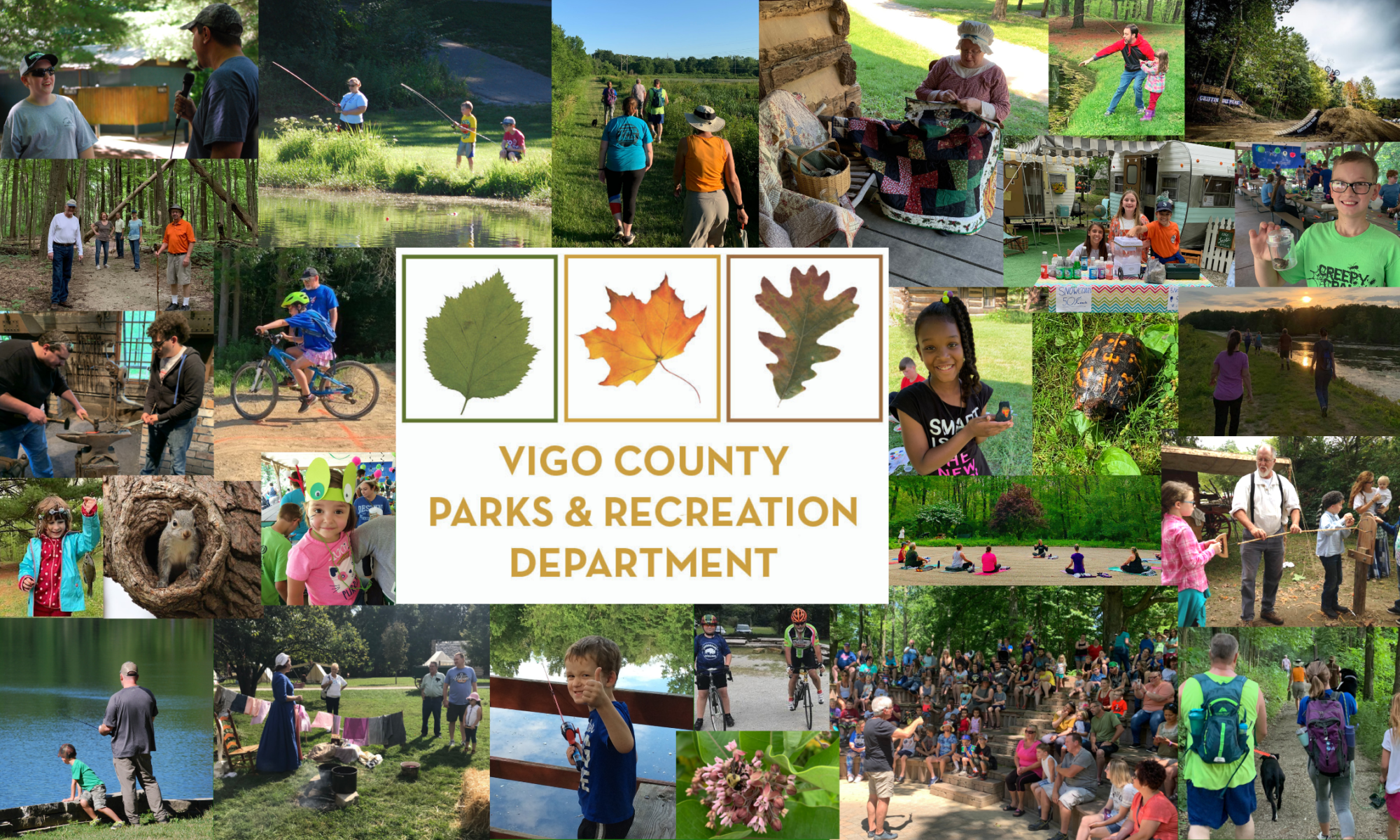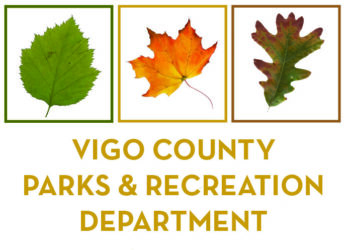We are almost done with our tour of the Vigo County Parks and today’s stop is going to look a little different again. Today, we’re going to look at a piece of a larger park and that is our very own J.I. Case Wetlands in Hawthorn Park because we want to highlight the importance of wetlands! The levee for J.I. Case was built in 1984 and the lake was filled in 1985 and while its purpose of serving as a wetland is important it also serves an important role in waterfowl management. The 50.3 acre lake attracts migratory birds in the fall and the 23.5 acres across from the J.I. Case remains in its natural state to serve as a wildlife nesting area.
J.I. Case Wetlands, and our Wabashiki Wetlands, are just a fraction of Indiana’s 800,000 remaining acres of wetlands, which is less than 20% of it’s original wetland acreage. You might be thinking what are wetlands? When you think of them you might imagine a swamp like the Everglades and while that is a type of wetland, there are actually several different types! Wetlands are areas in the landscape that contain standing water at or near the soil surface for part or all of the year and are defined by their vegetation, hydrology and soil. An area is considered a wetland if more than 50% of its vegetation occurs in a wetland, there is water present at or above the soil level at some point during the year and that water causes the soil to be limited in oxygen. The four types of wetlands are marshes, swamps, bogs and fens. Some wetlands, like at Dewey Point, are not wet year-round!
Wetlands are important because they can help absorb floodwaters and rainwater along with absorb excess nutrients, sediment and other pollutants before they reach rivers, lakes and other bodies of water. Wetlands can be constructed to be water treatment to remove chemicals and other harmful pollutants from water. They also help lessen climate change by protecting coastal regions from storms, provide water during droughts, store carbon and create a cooling effect by absorbing heat. Healthy wetlands even reduce mosquito populations.
Next time you’re out on an adventure be sure to participate in the Indiana Wetlands Challenge by visiting J.I. Case!


